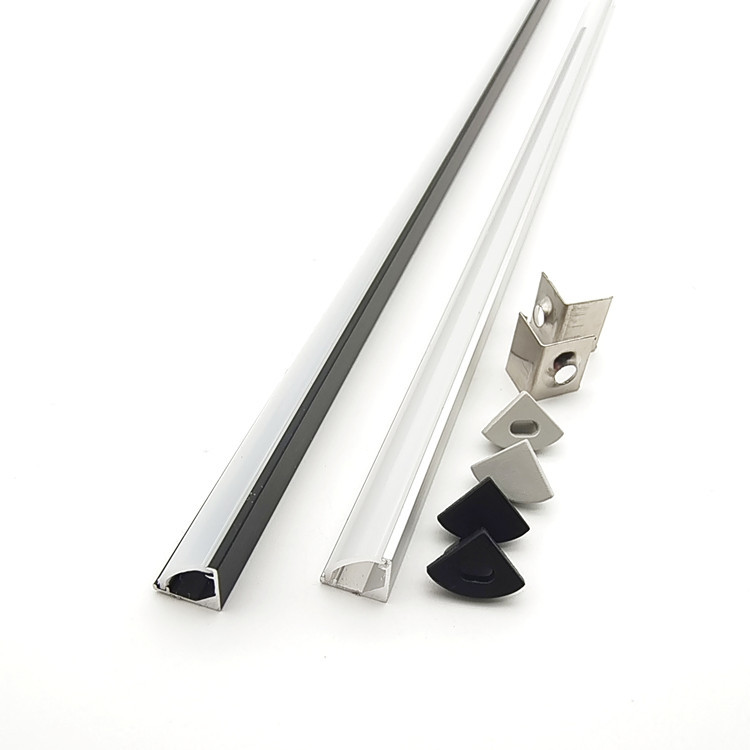Features and considerations for LED strip profiles
2024-04-15
A profile for LED strip, also known as an LED strip channel or LED strip housing, is an extruded aluminum or plastic enclosure designed to house and protect LED light strips or tapes. These profiles provide a range of benefits, including heat dissipation, diffusion of light, protection from dust and moisture, and aesthetic enhancement. Here are some key features and considerations for LED strip profiles:
1. Material: LED strip profiles are commonly made from aluminum or plastic materials. Aluminum profiles offer excellent heat dissipation properties and durability, while plastic profiles are lightweight and more affordable. The choice of material depends on factors such as the application, budget, and desired aesthetics.
2. Design: LED strip profiles come in various designs and configurations to accommodate different types and sizes of LED strips. Common designs include surface-mounted profiles, recessed profiles, corner profiles, and suspended profiles. Profiles may feature a clear, frosted, or milky cover to diffuse light and reduce glare.
3. Heat Dissipation: Aluminum LED strip profiles are designed to help dissipate heat generated by the LED strips during operation. The aluminum construction acts as a heat sink, drawing heat away from the LEDs and dissipating it into the surrounding environment. Effective heat dissipation helps to prolong the lifespan of the LEDs and maintain optimal performance.
4. Diffusion of Light: LED strip profiles with frosted or milky covers help to diffuse light emitted by the LEDs, creating a softer and more uniform lighting effect. Diffused light reduces glare, minimizes hot spots, and enhances the visual appeal of the lighting installation.
5. Protection: LED strip profiles provide protection for the LED strips against dust, moisture, and physical damage. The profile housing shields the LED strips from environmental elements, prolonging their lifespan and ensuring reliable performance in indoor and outdoor applications.
6. Installation: LED strip profiles are designed for easy installation and can be mounted on various surfaces, including walls, ceilings, floors, and furniture. They may feature mounting brackets, clips, or adhesive backing for secure attachment. Some profiles also include end caps and connectors for a clean and professional finish.
7. Customization: LED strip profiles can be customized with different finishes, colors, and lengths to match the aesthetic preferences or design requirements of the application. Customization options may include powder coating, anodizing, or painting of the profile surface.
8. Compatibility: LED strip profiles are compatible with a wide range of LED strips, including flexible, rigid, and waterproof strips. They accommodate different strip widths and configurations, ensuring compatibility with various LED strip products on the market.
9. Applications: LED strip profiles are used in a wide range of applications, including architectural lighting, interior design, signage, display lighting, under-cabinet lighting, and accent lighting. They are suitable for residential, commercial, and industrial settings, providing versatile and energy-efficient lighting solutions.
Overall, LED strip profiles offer a practical and aesthetically pleasing solution for housing and enhancing the performance of LED light strips. By considering factors such as material, design, heat dissipation, light diffusion, protection, installation, customization, compatibility, and applications, you can select the right LED strip profile to meet the specific requirements of your lighting project or application.



